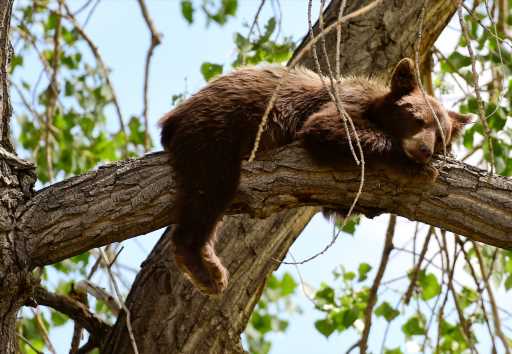
Coloradans who give short shrift to “bear aware” warnings by Colorado Parks and Wildlife officials might think twice after learning how many bears the agency euthanizes each year because of dangerous human-bear interactions.
Over the past seven years, CPW has had to put down an average of 110 bears annually. As of this week, 63 have been euthanized in 2022. That’s out of an estimated bear population in the state of 17,000 to 20,000.
Bears get into trouble when they associate the presence of humans with the likelihood of available food sources.
“Once they break into a human structure, they get classified as a dangerous bear,” said Joey Livingston, a CPW public information officer. “In those situations we do, unfortunately, have to euthanize them.”
That’s why CPW warns Coloradans in late summer about the importance of reducing potential food sources for bears on their properties and in vehicles. Bears are about to enter a stage called hyperphagia to prepare for winter. They can consume up to 20,000 calories daily during this annual eating binge. That typically begins in September, peaking in mid to late September or early October.
“Pretty much every time we get involved, it’s got to do with human-bear conflicts, and most of the time that comes back to a human-provided food source,” Livingston said. “Even if people don’t necessarily know they’re providing food sources, they can be, even (with) fruit trees — those can act as an attractant.
“Some of these bears learn that trash equals food. They see a trash can, they’re going to investigate. The more we can keep them from learning that trash equals food, or humans equal food, the less likely we’re going to have to get involved.”
CPW said some areas of the state saw a loss of food sources for bears above 7,000 feet in elevation this year because of a hard freeze in May and continued drought, which could lead bears in those locations to seek food in human-populated areas. In the Front Range, where there has been considerable monsoon moisture this summer, Livingston said the outlook is better.
“Luckily, the amount of rain and moisture offset some of the effects of the freeze and led to a relatively good year for the bears,” Livingston said. “Good year, meaning there is enough natural food for bears; they don’t need to come into urban areas, and fewer bears get euthanized.”
In many cases, bears captured in urban areas that are first-time offenders get relocated rather than euthanized as a sort of “two-strike” rule, Livingston said. CPW has relocated 30 bears so far this year.
“Relocations are usually for nuisance bears that are coming around too much, won’t leave, maybe get into a shed or something, not an occupied structure,” Livingston said. “Once a bear gets into an occupied structure, that’s when it becomes a dangerous bear, and we do euthanize right away. If they can get into a house and get food, they’re going to get into a house again, and the chances of someone getting hurt increase dramatically.”
CPW asks Coloradans to bear-proof their homes by keeping trash in well-secured locations; putting garbage cans on the street only on the day of pick-up; cleaning garbage cans regularly with ammonia to keep them free from food odors; securing compost piles; cleaning barbecue grills after every use; and avoiding leaving food in cars. Pet food and livestock feed should not be left outside. If you have fruit trees, fruit should not be allowed to rot on the ground.
“Research shows that bears prefer natural sources of food,” said Brad Banulis, CPW’s northwest region senior wildlife biologist. “But they will find sources of human-provided food if it’s available when natural food sources are limited, which can become dangerous to humans. Preventing bears from relying on human food sources takes a community effort, and it’s important that we all take proactive steps to limit human food sources in order to avoid any possible conflicts with bears and bearproof our homes.”
Subscribe to our weekly newsletter, The Adventurist, to get outdoors news sent straight to your inbox.
Source: Read Full Article










